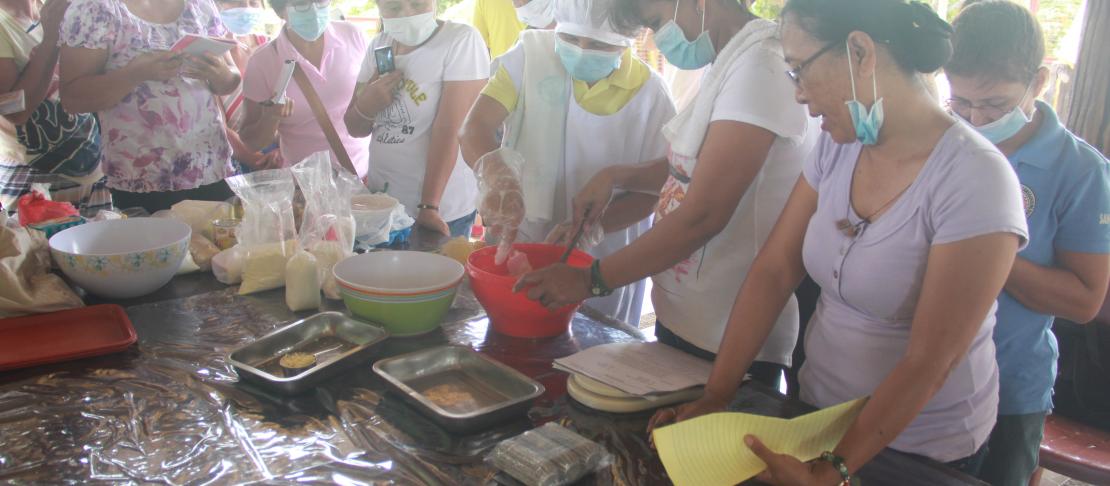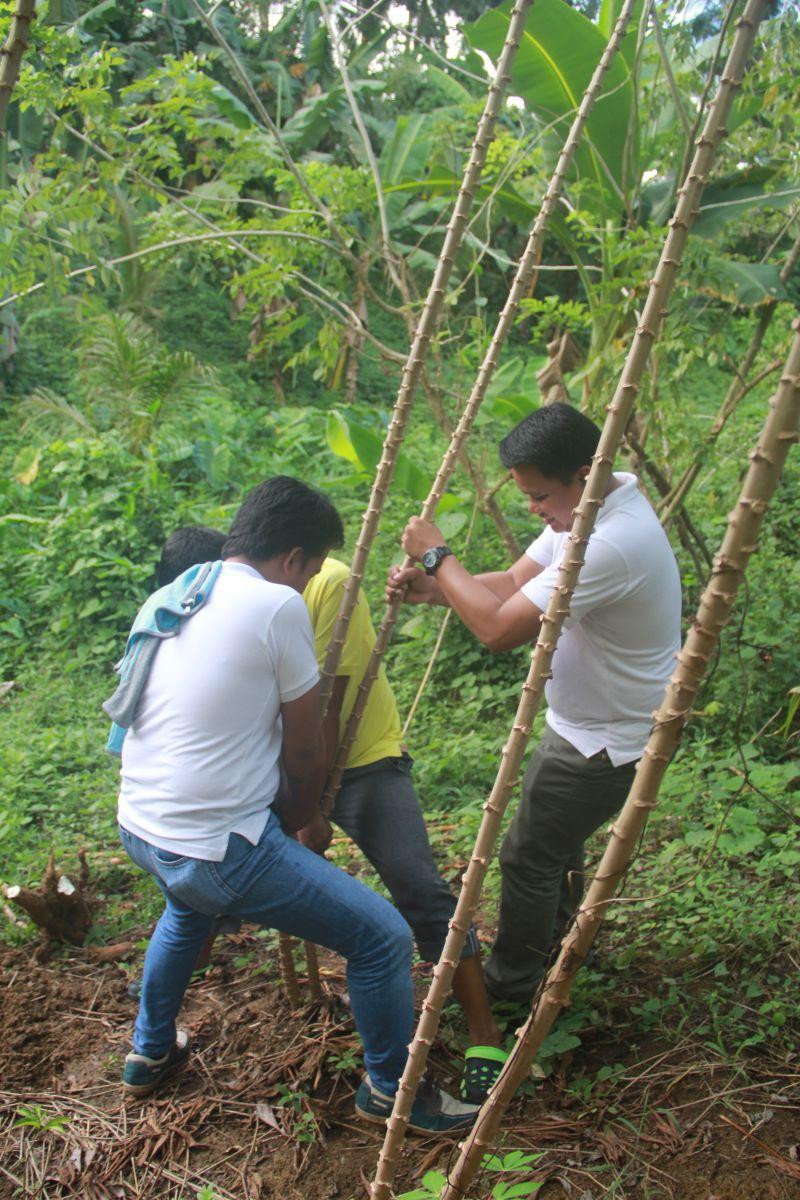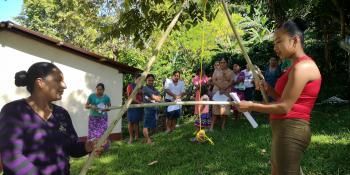Pass the cassava, please!

Cassava production is being introduced to farmers as a climate-smart agricultural practice in the Philippines.
One of the more widely grown root crops in the world, cassava, is used to make a wide variety of products, including tapioca, alcoholic beverages, animal feeds and biofuel.
Indonesia, Thailand, Vietnam and Cambodia were among the top 20 cassava-producing countries in 2012; similarly, farmers in the Philippines widely grow this important root crop.
As it is a heat-tolerant crop, researchers are introducing cassava production to farmers as a climate-smart agriculture (CSA) practice, which could enhance food security while ensuring communities can adapt to and mitigate climate change.
From one truck to four trucks
Found on the eastern coast of the Philippines, Guinayangan is an agricultural municipality in Quezon province, which is largely dependent on coconut production. Like many areas in the country, the municipality has observed longer dry seasons as a result of climate change. This negatively affects coconuts, thus, alternative livelihoods are being explored.
The International Institute of Rural Reconstruction (IIRR), the local government of Guinayangan, Department of Agriculture (DA) and Philippine Root Crops Research and Training Center (PhilRootcrops) are scaling up cassava production as a CSA practice in Guinayangan.
IIRR first introduced cassava growing to farmers in six barangays (villages) in 2015. They brought one truckload of cassava stems of the Lakan 2 white variety, as planting materials, and distributed these to 21 farmers. Upon seeing the farmers’ growing interest in cassava production, the Office of the Municipal Agriculturist took matters into their own hands and requested for more planting materials.
Researchers and a farmer harvesting cassava in Guinayangan. Growing cassava is gaining popularity in the municipality as it is a heat-tolerant crop. Photo: Amy Cruz
William Lopez, an agricultural technician in Guinayangan, said: “Some members of the farmers’ federation were interested in growing cassava. So during the DA meeting for the region, we asked for one truck of cassava planting materials, which were distributed during the farmers’ day in Guinayangan.” Later on, they were able to request two more truckloads for the farmers.
The support from the DA did not end with the four trucks of cassava. They also brought pieces of machinery like chipper, grater and granulator for free use of the municipality. The DA and the PhilRootcrops also provided training to the women farmers on processing and making snack products from cassava.
As of July 2016, cassava production has now spread to 15 villages in Guinayangan.
Scaling out the cassava
To scale out the practice of planting cassava, a nursery for propagation was established in one of the barangays in Guinayangan. Farmers are also encouraged to share their planting materials with neighbors, as they were able to get planting materials for free in the first place.
Sustainability is a major issue as cassava tends to exhaust the nutrients in the soil after one to two years. So, researchers and technicians will introduce the intercropping of cassava with peanuts in the next planting season. Peanuts would enrich the otherwise degrading soil while cassava will protect the peanut crop during typhoons. Farmers would ultimately benefit with a more secure source of income.
With more farmers planting cassava, harvests need to have a ready and larger market. IIRR and DA linked the farmers with Global Foods, a private food distribution service company. Global Foods agreed to buy the farmers' harvests that pass the set standards of the company. Off-size cassavas are processed into chips and sold to feed companies. Women’s groups could also cook the 'reject' cassavas into snacks that can be sold at the community schools.
The DA and municipal government had a large part to play in the spontaneous scaling out of this practice. According to Dr Julian Gonsalves, senior program advisor of IIRR: “[It is] important to keep recognizing the local government unit… The example of how cassava spread from one village to 15 villages and how the Office of the Municipal Agriculturist directly approached the province and the national DA office is a good example of spontaneous outscaling.”
So, more cassava, anyone?
Read more:
- Climate variability aggravates pest and disease problems in cassava in Southeast Asia
- Where do our crops come from?
- Farmers in Southeast Asia learn about climate-smart agriculture practices
Amy Cruz is the junior communications specialist for the World Agroforestry Centre Philippines. She is also a communication consultant with the CCAFS SEA program.




